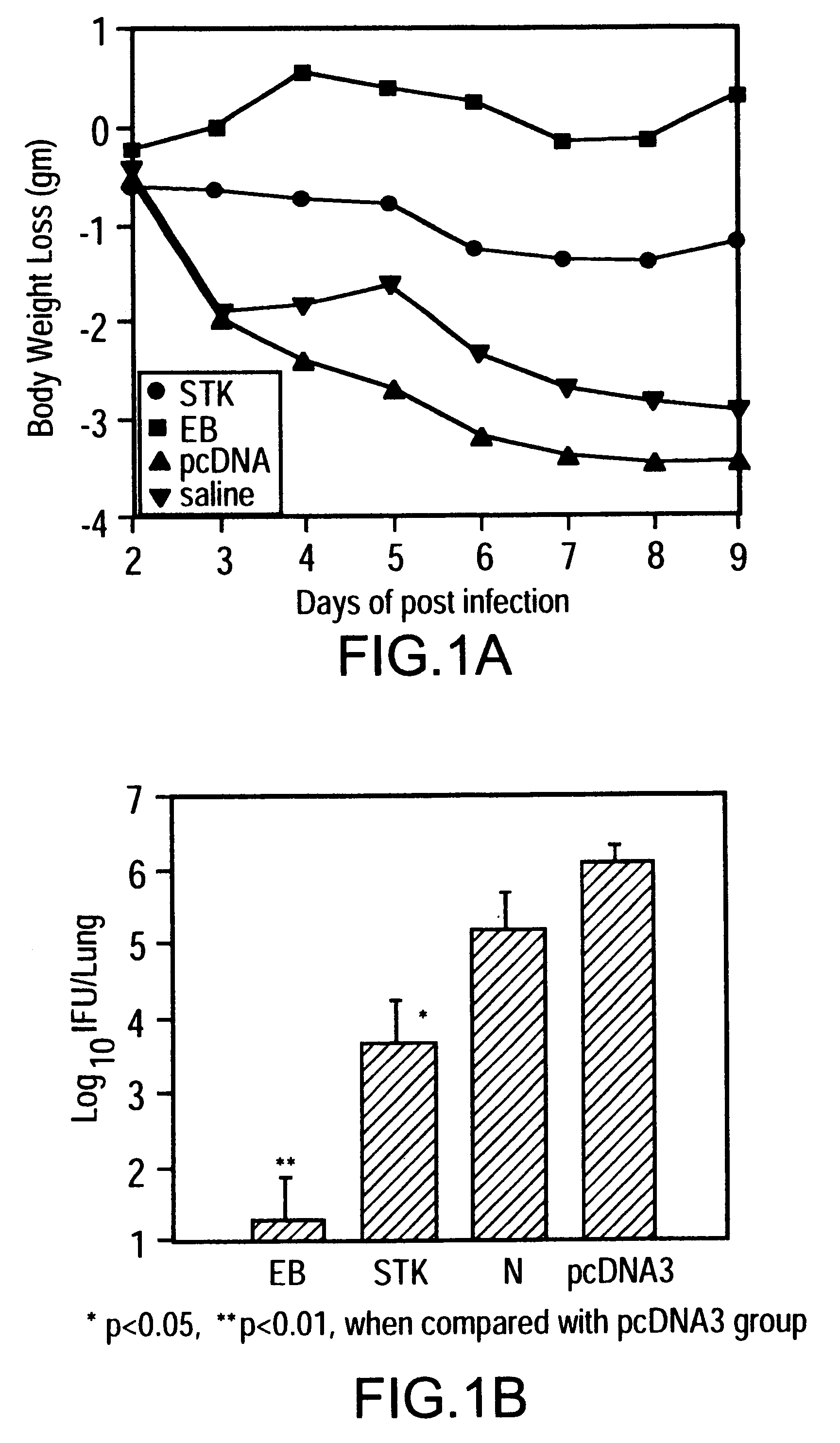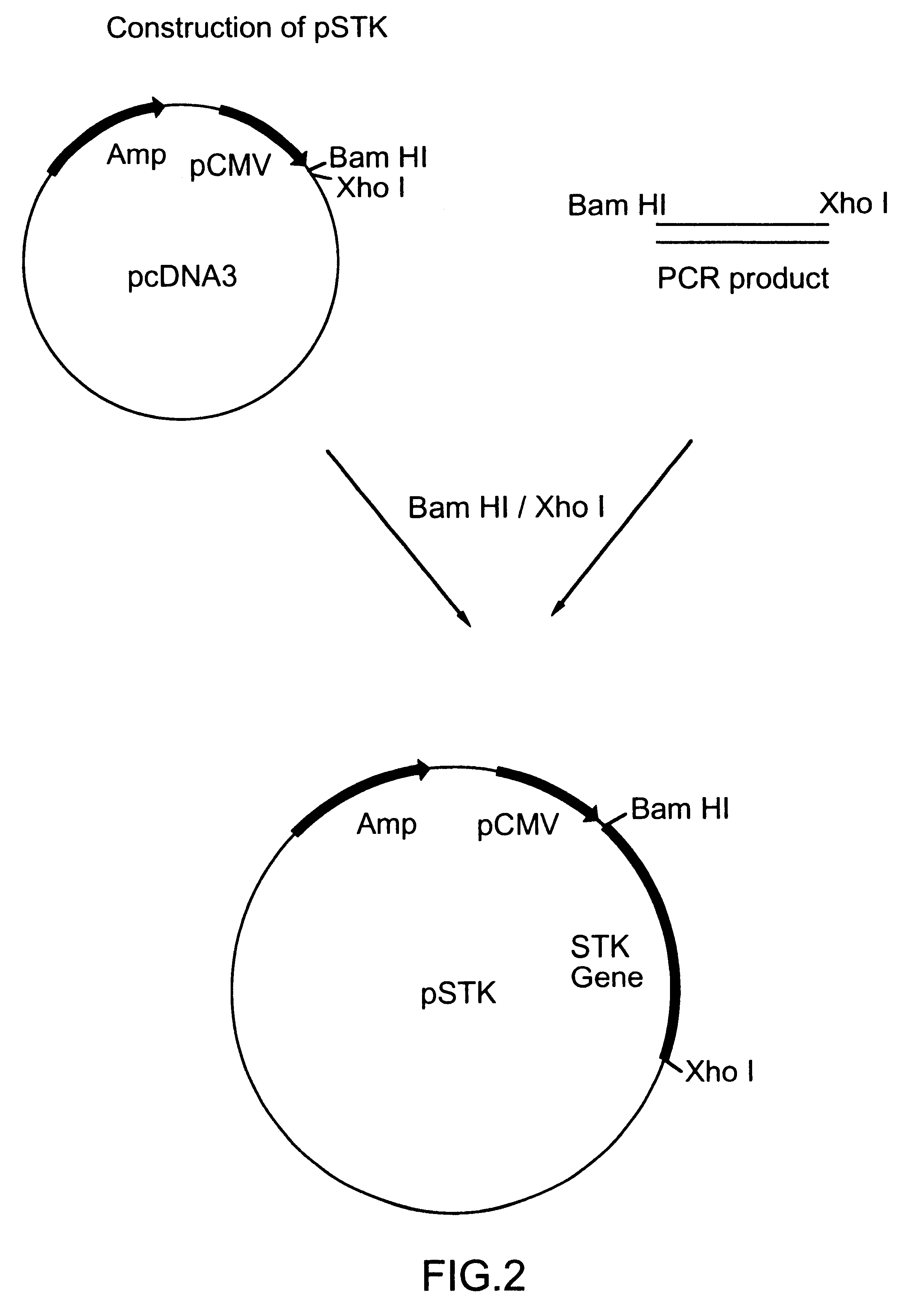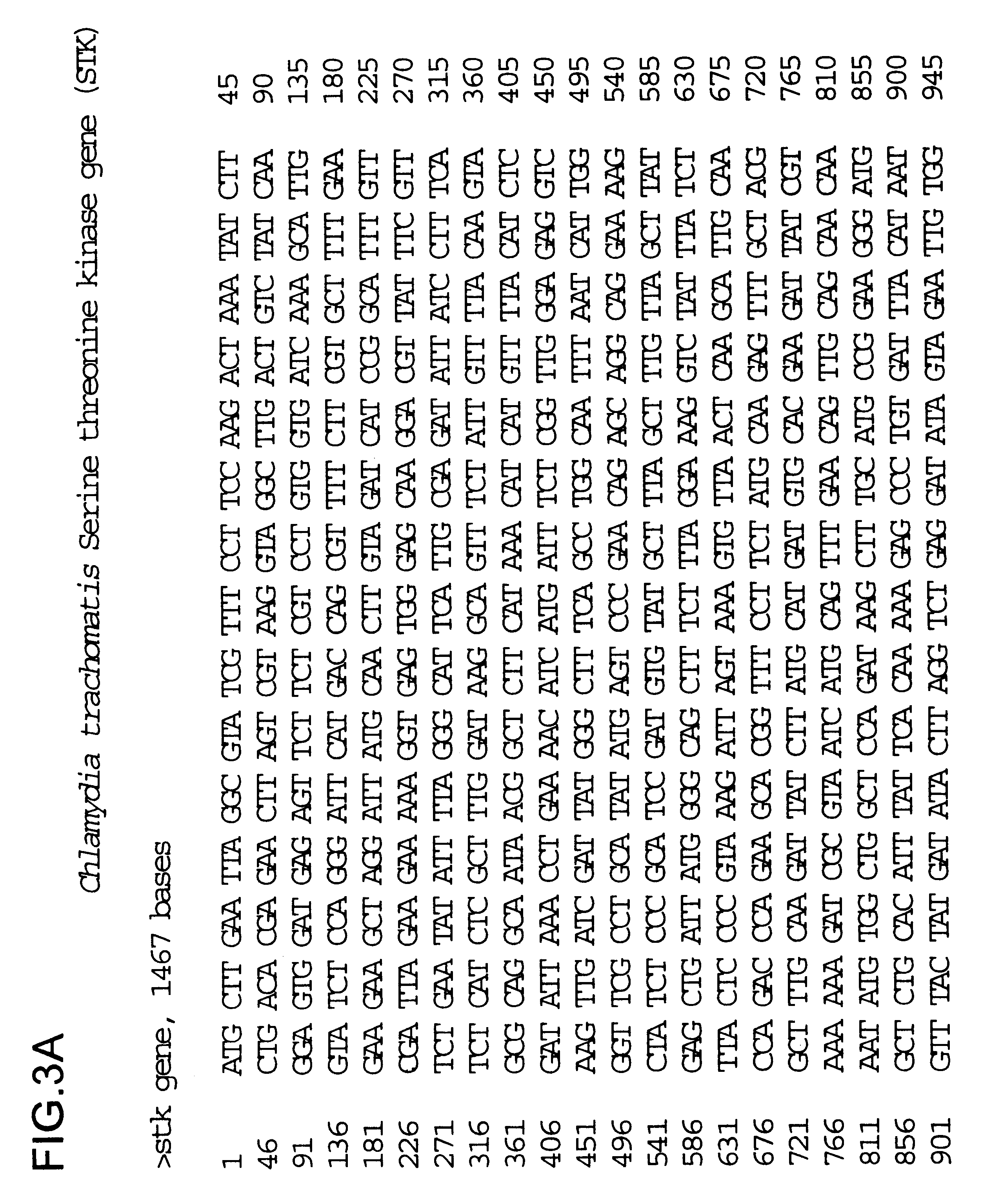DNA immunization against chlamydia infection
a technology of chlamydia and immunization, applied in the field of dna immunization, can solve the problems of subunit vaccine failure and general failure of vaccines, and achieve the effect of reducing background
- Summary
- Abstract
- Description
- Claims
- Application Information
AI Technical Summary
Benefits of technology
Problems solved by technology
Method used
Image
Examples
example 1
This Example shows the preparation of a plasmid vector for immunization.
The C. trachomatis mouse pneumonitis (MoPn) isolate was grown in HeLa 229 cells in Eagle MEM containing 10% fetal bovine serum and 2 mM L-glutamine. The MoPn EBs were harvested and purified by step gradient density centrifugation at 43,000 g for 60 min at 4.degree. C. The purified EBs were washed twice with PBS, centifugated at 30,000 g for 30 min, resuspended in sucrose-phosphate-glutamic acid (SPG) buffer and frozen at -70.degree. C. until used.
The serine-threonine kinase (STK) gene was cloned into eukaryotic expression plasmid, pcDNA3 (Invitrogen, San Diego) to form plasmid pcDNA3 / STK. The STK gene was amplified from MoPn genomic DNA by polymerase chain reaction (PCR) with a 5' primer (GGG GAT CCG CCA CCA TGC TTG AAT TAG GCG TAT CGT TTC CT--SEQ ID No: 2) which included a BamHI site, a start cod6 n, and the N-terminal sequence of the mature serine-threonine kinase of MoPn and a 3' primer (GGG GCT CGA GCT ATT A...
example 2
This Example shows the results of immunizing studies using the plasmid vector.
Female Balb / c mice (4 to 5 weeks old) were purchased from Charles River Canada (Sr. Constant, Canada) mice were intramuscularly and intranasally immunized with plasmid DNA, prepared as described in Example 1, on three occasions, at 0, 2 and 4 weeks. For each immunization, a total of 200 .mu.g DNA in 200 .mu.l was injected into the two quadriceps muscles (100 .mu.g of DNA / injection site) using a 27-gauge needle. At the same season, 50 .mu.g DNA in 50 .mu.l was delivered onto the nostrils of mice with a micropipette. The droplet was subsequently inhaled by the mice.
Mice were challenged intranasally with 2.times.10.sup.3 IFU of C. trachomatis MoPn ED 14 days after last immunization, as described. Briefly, after ether anesthesia 25 .mu.l of SPG containing an inoculum of 2.times.10.sup.3 IFU of MoPn was delivered onto the nostrils of mice with a micropipette. The droplet was subsequently inhalted by the mice. B...
PUM
| Property | Measurement | Unit |
|---|---|---|
| molecular mass | aaaaa | aaaaa |
| temperatures | aaaaa | aaaaa |
| concentration | aaaaa | aaaaa |
Abstract
Description
Claims
Application Information
 Login to View More
Login to View More - R&D
- Intellectual Property
- Life Sciences
- Materials
- Tech Scout
- Unparalleled Data Quality
- Higher Quality Content
- 60% Fewer Hallucinations
Browse by: Latest US Patents, China's latest patents, Technical Efficacy Thesaurus, Application Domain, Technology Topic, Popular Technical Reports.
© 2025 PatSnap. All rights reserved.Legal|Privacy policy|Modern Slavery Act Transparency Statement|Sitemap|About US| Contact US: help@patsnap.com



